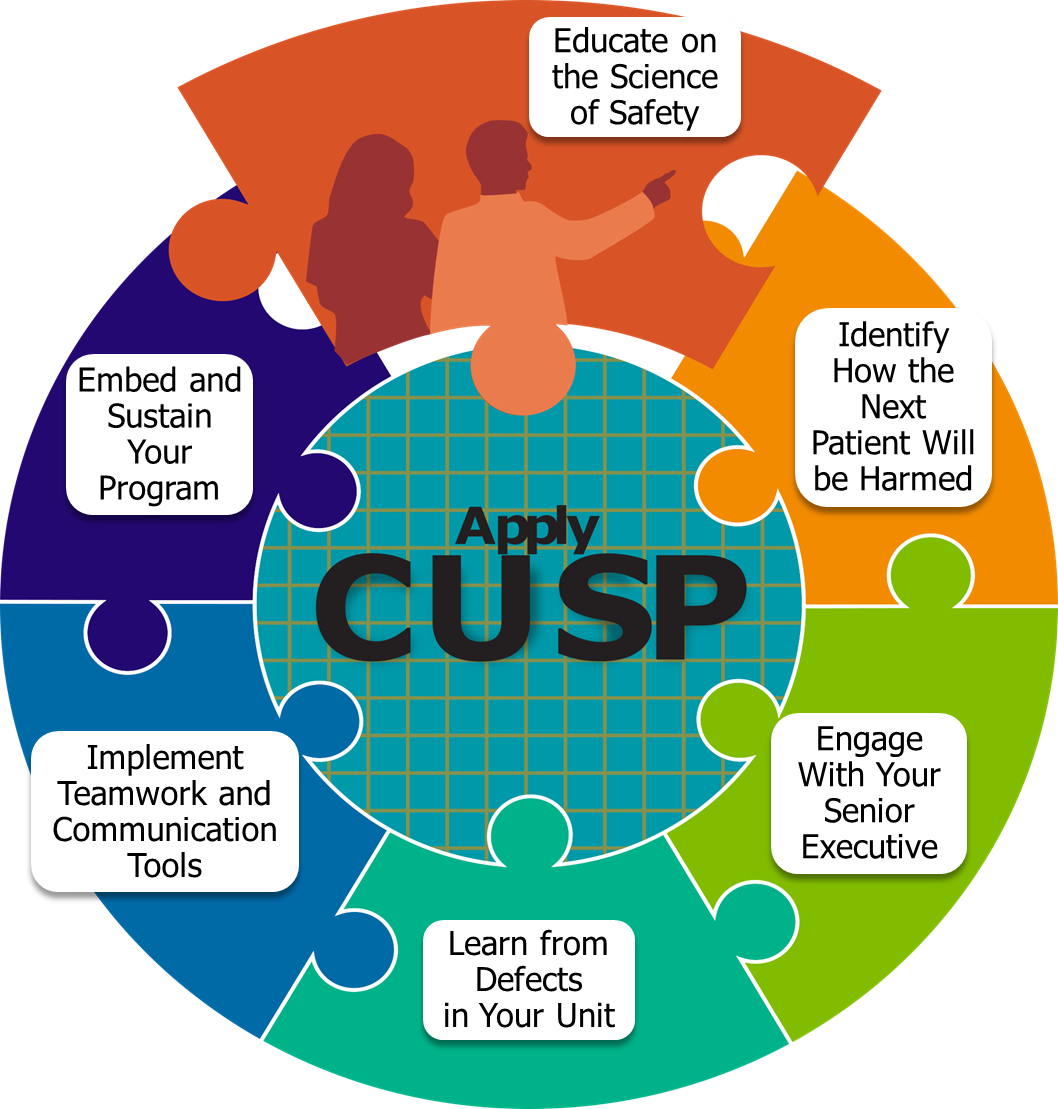CUSP and MRSA Prevention
 The Comprehensive Unit-based Safety Program (CUSP) framework is a proven method to address patient safety and quality improvement issues. The key to CUSP’s success is that it starts with the frontline staff and focuses on promoting changes in thinking and behavior to reduce preventable harm.
The Comprehensive Unit-based Safety Program (CUSP) framework is a proven method to address patient safety and quality improvement issues. The key to CUSP’s success is that it starts with the frontline staff and focuses on promoting changes in thinking and behavior to reduce preventable harm.
The Toolkit for MRSA Prevention was built upon concepts derived from CUSP. Utilizing CUSP in your MRSA prevention implementation efforts provides a proven framework to help your interventions succeed.
Not familiar with CUSP, or don’t have a CUSP team? Don’t worry! This toolkit provides a basic introduction to CUSP and how the framework can be applied to MRSA Prevention, so you can use any or all of the elements to help make your projects and programs a success!
Prior knowledge of CUSP or an existing CUSP team is not required to use this toolkit. CUSP methods and tools have been fully integrated so the clinical materials can be utilized on their own.
CUSP Tools and Resources
CUSP comes with many useful tools and resources. Relevant tools are linked in each of the topic pages below.
Click here to view all the tools and resources on one page.
Why Choose a CUSP Approach?
If you're new to CUSP, you may want to know exactly why you should choose the CUSP approach. In this section, we take a step back and observe the impact of medical errors and preventable harm and the importance of safety culture as a part of any successful intervention. We'll make the case for the CUSP framework as an effective approach to take on these challenges and promote success.
The Science of Safety
The Science of Safety teaches healthcare teams to view patient safety as the outcome of interaction among many complex systems within healthcare. It emphasizes a systems perspective and principles of safe design, as central to patient safety improvement.
How To Integrate a CUSP Approach
This section delves deeper into the practice and application of CUSP and integrating the CUSP approach into your MRSA prevention efforts. This section reviews the steps of CUSP and the assembly and operation of a CUSP team.
Performing a Premortem Assessment
The Premortem Tool is a proactive way to anticipate risks and failures before they actually happen. By imagining scenarios where things go wrong, teams can spot vulnerabilities and plan to mitigate them. This method encourages better decision-making and improves strategic planning.
What Are The 4 Es?
The 4 Es – Engage, Educate, Execute, and Evaluate – are a useful framework to understand and guide the rollout of patient safety interventions. This structured approach supports effective implementation and fosters a culture of continuous improvement.
CUSP Psychological Safety
CUSP encourages – and relies – on frontline staff to speak up if they observe preventable harm. How do you create a safe environment for this feedback loop? In this section, we discuss the importance of psychological safety and strategies to foster open communication.
Learning From Defects
A "defect" is defined as "Anything that you don't want to have happen again." In the CUSP model, defects are understood as the product of the systems in which they occur. Learning from defects and adapting your system is crucial to preventing the defect from reoccurring. This topic reviews the process of identifying a defect and responding to that new knowledge to create and sustain improvements.
Evaluating & Sustaining Progress
Implementing a patient safety intervention is not a one-time occurrence. A key step of CUSP is to scrutinize the work that’s been done, adapt to lessons learned, and then improve upon the previous effort. In this section, we will look at methods of evaluating your progress and sustaining changes and future success.



